Best Places to Visit in Ampara
Ampara, The plain countryside in the midst of the Sri Lankan island blotched with paddy field, meres, and palm hursts. It’s a former hunter’s resting place in the British Colonial season. Calm rural surroundings withdrew from the urban busy vicinity. A relatively small town, visiting can only be done by enrooting. Border with the beautiful eastern sea on one side and the other part is connected to landside. Fantastic place for bird watching and wildlife enthusiasts. It’s a bit remote area most civilians live from fishing.
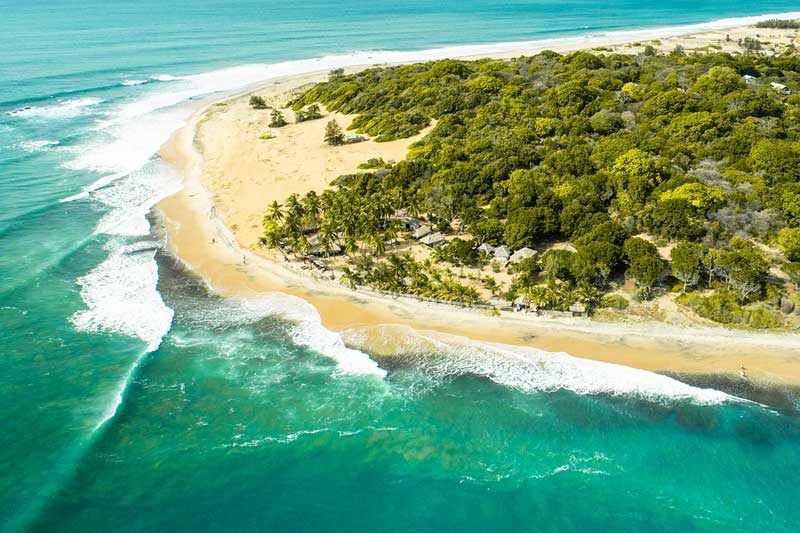
One of the largest paddy harvesting city of the country with mixed ethnic cultures. The citizen who lives here take the benefit from the large coastal area by making the fishing is their livelihood. It’s 360km away from the capital of the country. Sinhalese are the ethnic majority here while considerable numbers of other minor races live together.
Though is an uncelebrated city comparable to others, the Ampara district has many attractions. Sometimes it attracts more visitors than any other famous traveling city in Sri Lanka. Well-famous Arugam Bay, Pottuvil Point, Kumana National Park, Gal Oya National Park, Lahugala Kithulana National Park, and Buddhangala Monastery is more popular among native and foreign visitors. Deegavapi Sthupa is another attraction of Ampara having a significant historical and religious value. Peace Pagoda which is a peaceful temple building created in 1988 is another religious attraction here. Ampara is not included in many visitors’ priority list. But, once visit here, everyone will add it to the wish list for another time.
Weather in Ampara
Ampara has a hot temperature almost all year with a comfort level of humidity. Its temperature typically varies between 23°C to 33°C (75°F to 93°F) rarely below 23°C (72°F) and above 33°C (96°F). Ampara district has rain throughout the year which shows extreme seasonal variations amongst rainfall. The least rainfall happens around July while the highest rainfall occurs around November. The length of the day doesn’t vary over the year as Sri Lanka is a horizontal country. But there are shortest days around the end of the December while longest days are around June.
Are you planning to visit Ampara?
Check out the places we recommend you to visit on your trip to Ampara.
Arugam Bay
Semicircular curl soft sand, cool sea wind, serene bluish landscapes, and beautiful light blue horizon keep Arugam bay well reputed for its aesthetic beauty. It’s a well-known point break that everyone recommends to have maximum surfing experience from the whole country. If you are a surfer, take your surfboard and explore the energy of the blue waves. You will swear there is no experience like that for your entire life.
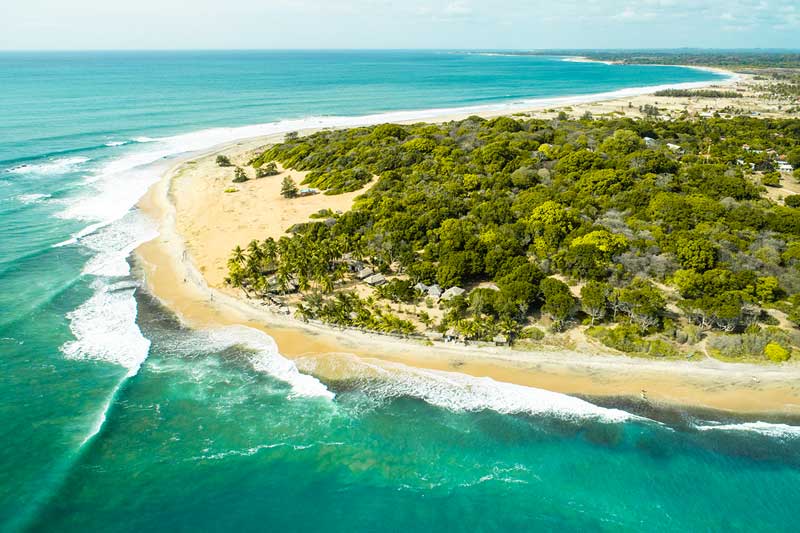
It is comparatively small with other beaches. But, there are always several people hanging around the place and feel the scenic beauty, especially in its world-famous rush months. If you are not already a surfer, there are various stuff you can still do. What about the swing in a hammock while drinking a fresh King Coconut in the evening? Either having breakfast or lunch in a beachfront guesthouse or an Oceanside restaurant? Or climb up to the famous Elephant Rock which is located at an end of the bay and have a view of the whole area.
Arugam Bay is surrounded by greater wildlife. If you stay a few days, be aware of elephants who pass the area every morning and evening. And if you are a lonely visitor, better avoid unknown waterways and rivers as crocodiles are active here. Muhudu Maha Viharaya isn’t far away from Arugam Bay which is a charming temple located in dunes in Portugal. You can make a combined visit to the beach along with this nice temple.
Arugam Bay Location on the Map
Pottuvil Point
Pottuwil point is an unspoiled surfing paradise, an almost virgin beach that has a sandy bottom with deep and heavy current pull. It’s a whisky point situated on the eastern shore of Sri Lanka which is situated 6km from Arugam Bay. It’s an exposed point break with awesome constant surf. This well-known surf point has clean surfable waves who prefer longer rides in light wind conditions. Usually, surfers are busy here in the summer and it’s the best beach for beginners as well as professionals. But, this is highly recommended for someone who is waiting to catch is his first wave.
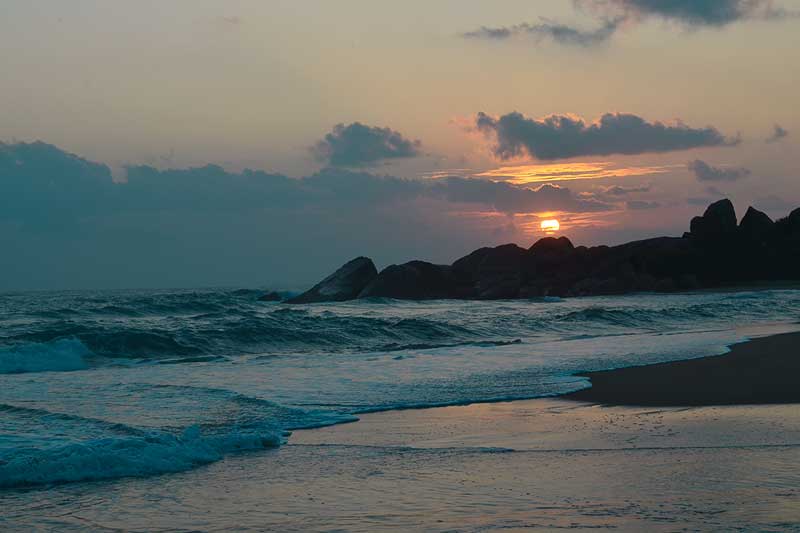
In Pottuvil, this less crowded beach is located on the East coast of the country. It’s popular for right-hand waves and sand-bottom points. Waves run almost about a kilometer and begin up the point and break so close to the shore. The surfer can easily step out into the sand and run back to the point. The scenic countryside and offshore winds come from west/southwest receive a mixture of wind swells and groundswells. These waves are relatively smaller than waves of Arugam Bay. But, still provide good walls for satisfying surfing.
Beyond the magnificent sunset in the evenings, you can try out some local Tamil foods. Being friendly with locals and grab some authentic local foods, may give you unforgettable experiences. After all, boat rides on Pottuvil lagoon teeming with Crocodiles, Monitors, Kingfishers, Eagles even Elephants make you so much inspired by the wildlife.
Pottuvil Point Location on the Map
Kumana National Park
Another amiable well-known eco-tourism attraction has located in the southeast corner of the country. Authentic Jungle experience to be having at the heart of the wilderness. A popular bird sanctuary in Sri Lanka, being a prime bird-watching destination of the whole world. Wetland zones begird with dry zone thorny forests with a wide range of aquatic plants and trees.
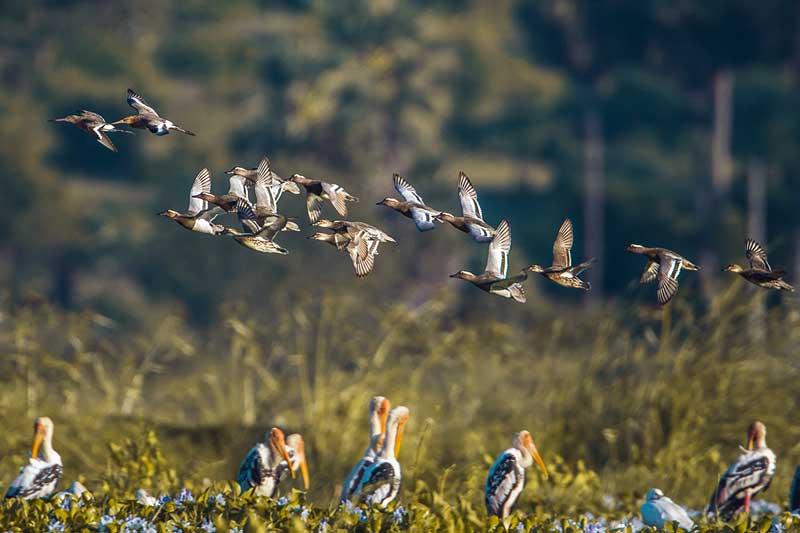
Many multitudes of birds breed roosts in a “Kumana Villu” which is the most significant feature here. A two-hundred-hectare natural swamp lake in the neighborhood of Kumana and Yala National park. This huge swamp is colonization for many species of water birds.
The swamp is undergoing occasional submergence with seawater which lets many water birds nest during their breeding seasons. Pelicans, Spoonbills, Herons, Painted Trorks, and White Ibis including several endemic verities. The Black-necked stock is a very rare bird that has been nearly observed to live in the swamp. Most importantly, a large number of threatened reptiles are breeding and nesting here, three rare turtle species, and a globally vulnerable crocodile species.
Apart from the beautiful birdlife, there are endemic, migrant, and endangered mammal species. Elephants, Leopards, Wild Boars, Bears, and Fishing cats are often found hunting and feeding around the Swamp. Yala East, is another name for this, is less crowded and lower in animal density, compared to the busy neighbor. If you have an idea of visiting Kumana, better read some papers and search on google before visiting this national park.
Kumana National Park Location on the Map
Gal Oya National Park
Lying in the southeast of Sri Lanka, an unpolluted natural sanctuary in the west of Ampara, Gal Oya National Park remaining with its aesthetic beauty. 25,000 hectares of fecund sempervirent forests with open savannas lie along the lake, Senanayaka Samudra. It is the largest inland water body in Sri Lanka with little islands peppered on the surface. This quiescent calm conciliatory environment, unique perspective of nature makes you feel lives in a paradise on earth. Teeming lives around here including 30 species mammals, 150 species of birds canopy the blue sky just like an awning.
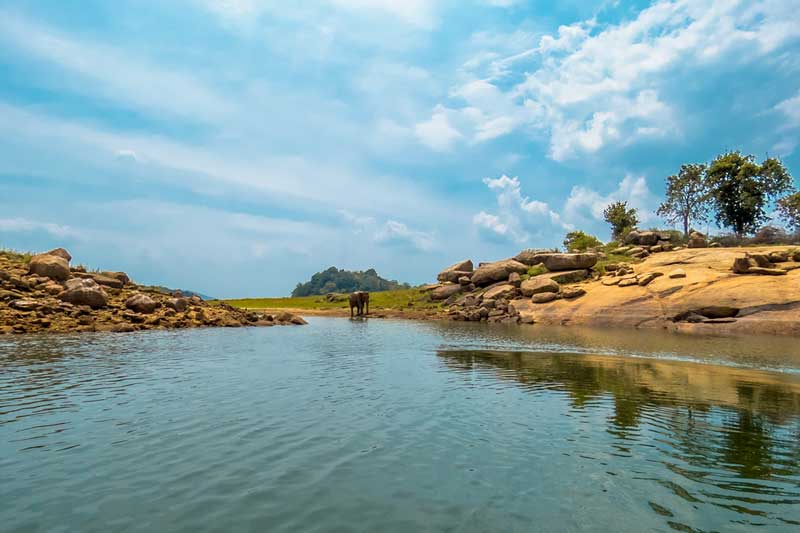
Gal Oya national park is popular for Asian Elephants live in their natural habitats. Giant elephants move slowly to the shoreline to pacify thirst. Dipping their trunks in water and pass through another giant enthusiastically. Little Elephant cubs running everywhere enjoying the love and pleasure of flock members. Such big creatures move calm and peacefully on the leafy green ground, dining, and feel the harmony in the earth. If you are lucky, you can watch the majestic scene of swimming elephants. The bumper in the land swims like a flowing balloon in the water.
You can arrange a boat ride enjoying the maximum offer of nature. Gal Oya is the only National Park in Sri Lanka that allows boat rides within the sanctuary. Riding in a boat among beautiful little islands with the frequent sight of swimming Elephants will include in your travel highlights a lifetime.
Gal Oya National Park Location on the Map
Lahugala Kithulana National Park
Lahugala Kithulana National Park is a hidden gem in the Ampara district. One of the smallest National parks in Sri Lanka. Despite its size, it’s one of the richest diversity in wildlife. The ingenuous beauty with the unshakable authentic surroundings give visitors a peaceful experience more than other wildlife travels. Lahugala National Park is recorded for many varieties of endemic animals. Especially, it’s best -known for a large number of elephant flocks. It’s marked out under very few untouched wildernesses remaining in Sri Lanka.
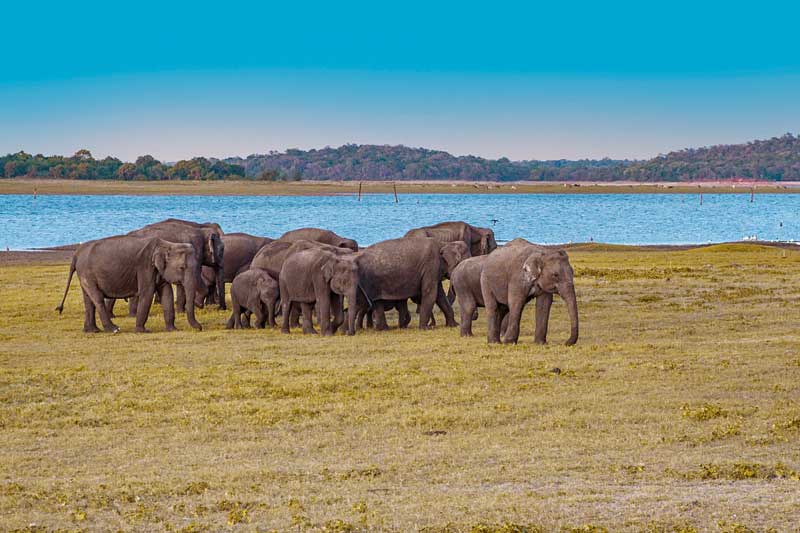
This park is a must-visit for elephant enthusiasts, renowned for the high congregation of elephants nearly 150. If you are interested in elephant watching, better arrange travel around July and August. Because in those months’ other water sources inside the jungle dries up and elephants gather around the Lahugala tank to fulfill their water requirements.
Is it only about natural beauty? But it’s not! There is an ancestral value, amongst the enticing natural beauty. A massive antique Pagoda; Neelagiri Maha Seya is situated inside the beautiful park. A stupa was built in the era of King. Kawanthissa in the 1st century. The colossal construction in the midst of the forest is suddenly, taking you back to 180BC. Unfortunately, this ancient historical land interposed with the Ealam war in Sri Lanka missed many chances of maintenance for decades. If you are interested in endemic native wildlife, Lahugala is a must, since it offers a mixture of cultural value along with wilderness.
Lahugala Kithulana National Park Location on the Map
Buddhangala Monastery
An ancient monastery stands deep in the jungle, an outcrop of five massive rocks, lost in the chronicles enclosed with a dense wilderness. The jungle around the monastery infested with wild animals let the pleasance remain silent for thousands of years in the rural Digamadulla area. It enlisted in the least-known historic places in Sri Lanka.
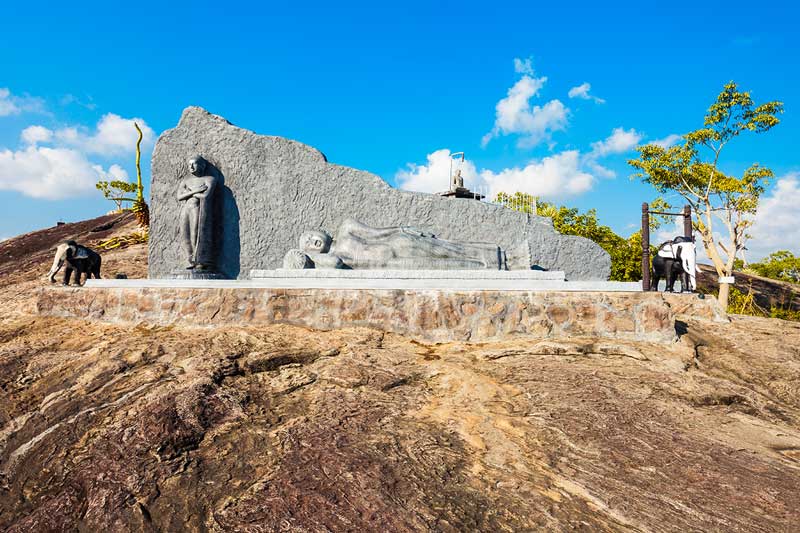
The name, Buddhangala derived from the shape of the rock formation which looked similar to Lord Buddha lying on a floor. Hence, occupied by the name, Buddhangala. The monastery has been abandoned over centuries due to the transpose of Kingdoms in old Sri Lanka. It wasn’t even documented until if found in 1964 by a young monk who traveled along the dene. After founding the ruins of the monastery, he has cleared the surrounding into a fairer level together with another monk.
Years later, the monastery became popular as the ancient relics emerged through the excavation. Carefully enshrined golden lotus flowers, a gold casket was found through excavation which are believed to be consecrated by a private donor. The casket is believed to be created in the 5th century according to the characteristics of the outer golden plates.
Years later, in 1974, there had been built a bell-shaped new Sthupa by the former president, William Gopallawa. But, once again it faced a darker period in the civil war of Sri Lanka with terrorism. Until then, it remains quiet and unpopular without the considerable attention of the government up to now.
Buddhangala Monastery Location on the Map
Other important tourist places that you can visit along with Ampara
Kudumbigala
Muhudu Maha Viharaya
Deegavapiya
Magul Maha Viharaya
Peace Pagoda Temple
